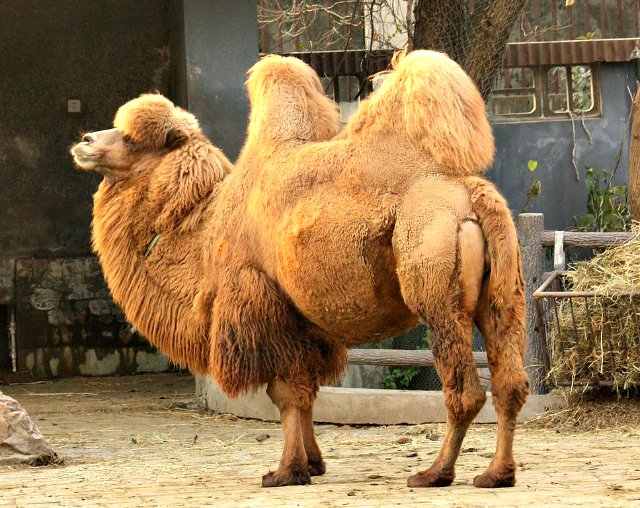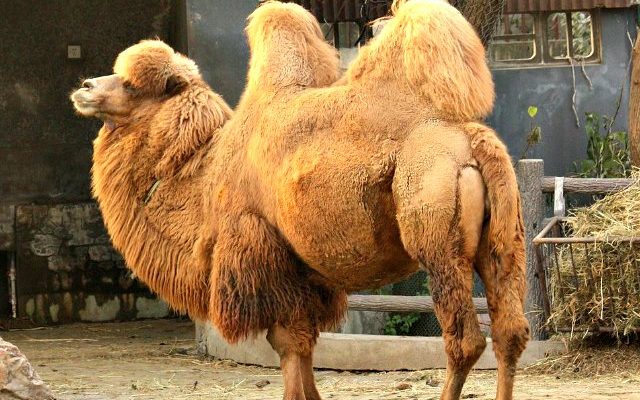
These amazing creatures, native to the steppes of Central Asia, are built to endure some of the harshest climates on Earth. Think of them like the ultimate survivors, perfectly equipped to thrive in both scorching heat and frigid cold. If you’re curious about what makes them so special, you’re in the right place! Let me explain the top ten facts that really highlight the charm of these double-humped darlings.
1. The Two Humps: What Do They Do?
You might be surprised to learn that the Bactrian camel has those two humps for a reason! While a common misconception is that they store water, they actually store fat. This fat acts as a reserve of energy, which the camel can metabolize when food is scarce.
Imagine hiking on a long journey without snacks. Those two humps are like our little snack packs, letting the camel travel long distances without needing to graze constantly. In some cases, they can go for several days without eating anything, relying on their stored fat to fuel their journey. This feature is particularly handy in the arid and inhospitable environments of the Gobi Desert.
2. Hardy Adaptability
Bactrian camels are renowned for their incredible ability to survive in extreme conditions. They can endure temperatures as low as -40°F (-40°C) in winter and soar up to 100°F (38°C) during summer. Think about it: most animals have a tough time with such drastic temperature changes, but these camels are pros.
Their thick fur insulates them against cold, while they can shed it during hotter months. In fact, during summer, they might look a bit shabby, losing clumps of fur as they prepare for the heat. It’s like nature’s way of providing them with a seasonal wardrobe!
3. Unique Feet for Tough Terrain
If you take a closer look at a Bactrian camel’s feet, you’ll notice they’re quite different from other camels. Their feet are broad and padded, allowing them to walk on soft sand and rough terrain without sinking. Picture striding across a sandy beach in flip-flops versus sturdy hiking boots; the latter would definitely give you better support!
These specially designed feet help them navigate through various landscapes, from rocky paths to sandy dunes, making them excellent companions for travelers in rugged regions.
4. Social and Intelligent Creatures
Bactrian camels are more social than you might think. They thrive in herds and have a complex social structure. Observing how they interact can be pretty enlightening! They communicate through vocalizations, body language, and even facial expressions.
You might see them nuzzle each other or engage in playful antics, which shows their social bonds. Honestly, it’s heartwarming to see them form friendships, just like we do! This intelligence makes them easier to train, which is why they’ve been domesticated for thousands of years.
5. A Historical Journey
The Bactrian camel has played a crucial role in human history, especially as a pack animal on the ancient Silk Road. Imagine traders traveling long distances, reliant on these camels to transport goods. They were like the delivery trucks of their time, carrying everything from silk to spices.
This relationship with humans dates back about 4,000 years. Today, you can still find Bactrian camels doing much the same thing, showcasing their enduring legacy in transportation and trade.
6. The Genetic Marvels
Bactrian camels are not just fascinating in terms of behavior and adaptability; they also have some unique genetic features. They’re one of the few mammals that can survive on saltwater and can process it without suffering dehydrations.
You might be wondering how this works. Their bodies operate like a finely-tuned machine, filtering out the salt while retaining the essential hydration. This extraordinary ability is another testament to how well-adapted they are to their harsh environment.
7. Lifespan and Reproduction
In the wild, Bactrian camels can live up to 40 years, while those in captivity may live even longer. This longevity is impressive for such large animals. Females usually give birth to a single calf after a gestation period of around 13 months.
Newborns are relatively large, weighing about 80 pounds, and are able to walk soon after birth. Can you imagine being a baby camel and immediately needing to get on your feet? It’s a little miracle in the animal kingdom!
8. Conservation Status
While Bactrian camels have adapted well over the centuries, they’re currently classified as critically endangered in the wild. Habitat loss, poaching, and scarcity of resources have taken a toll on their population.
Conservation efforts are underway to protect these wonderful animals. Organizations are working hard to preserve their habitats and raise awareness about the dangers they face. It’s a reminder of how important it is to care for our planet and all its inhabitants.
9. Their Diet: What Do They Eat?
Bactrian camels are opportunistic eaters, meaning they’ll eat whatever they can find in their arid environment. Their diet mainly consists of dry grasses, grains, and even thorny plants that other animals might avoid.
Their unique digestive system allows them to extract maximum nutrients from the tough vegetation. Think about it like us enjoying a hearty soup on a cold day; they’re getting all the nourishment they need from a sparse meal!
10. Interesting Camels Around the World
Did you know there are other types of camels? The Dromedary camel, known for its single hump, is the more common cousin to the Bactrian. While both species share certain traits, their adaptations are tailored to different environments: Dromedaries thrive in hot, sandy deserts, while Bactrians excel in cold, mountainous regions.
If you ever get the chance to see both types of camels, it’s pretty fascinating to compare their behaviors and environments. It’s like meeting two distant relatives—similar yet unique in their own ways!
In conclusion, the Bactrian camel is more than just a quirky animal with two humps; it’s a symbol of endurance and adaptability. From their intriguing social behaviors to their vital role in human history, these camels remind us of the incredible diversity of life on our planet. Next time you hear about camels, I hope you’ll take a moment to appreciate the fascinating world of the Bactrian!

